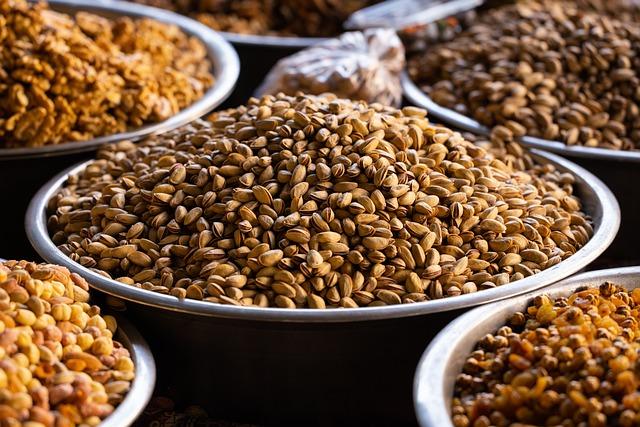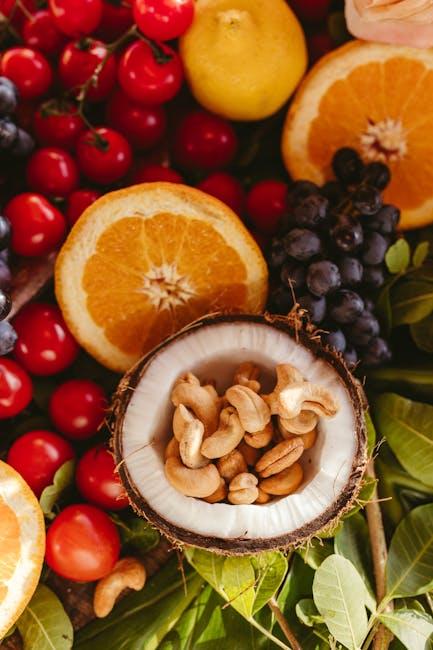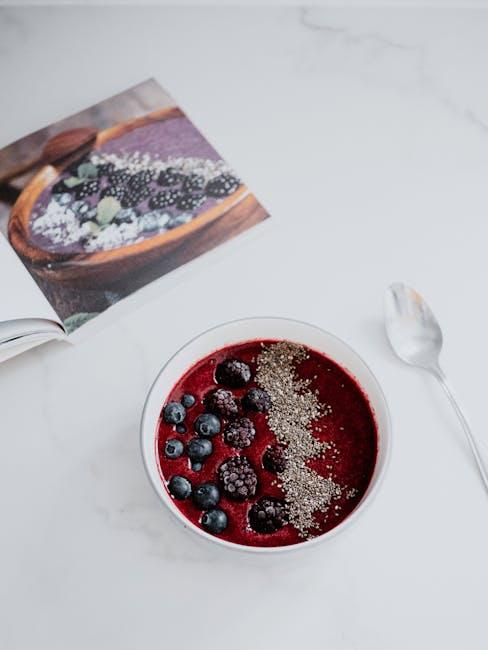In a world where kale has become a household name and quinoa is as ubiquitous as rice, the term “superfood” has woven itself into the fabric of modern dietary discourse. As colorful as the açai berries they often spotlight, these foods promise a bounty of health benefits, from boosting immunity to enhancing longevity. Yet, beneath the vibrant allure of smoothie bowls and antioxidant-rich snacks lies a question that simmers in the minds of skeptics and enthusiasts alike: Are superfoods truly the nutritional powerhouses they’re hailed to be, or are they merely the latest marketing concoction designed to tantalize our taste buds and wallets? In this exploration, we delve into the origins, science, and scrutiny surrounding superfoods, seeking to uncover whether they are the culinary champions of our time or just another passing trend in the ever-evolving landscape of health and wellness.
Decoding the Superfood Phenomenon: Origins and Claims
In recent years, the term “superfood” has become a staple in health and wellness vocabulary, but its origins are as varied as the foods it describes. The concept dates back to early 20th-century marketing campaigns, initially designed to promote bananas. Fast forward to today, and the label is often applied to a diverse range of foods like kale, quinoa, and acai berries, which are praised for their supposed extraordinary health benefits. Despite their popularity, superfoods are not a recognized food group, and the term lacks a scientific definition, leaving room for interpretation and, sometimes, misinterpretation.
Advocates claim these foods are nutrient-dense, offering high levels of antioxidants, vitamins, and minerals, which can lead to a host of health benefits, such as:
- Boosting immunity
- Enhancing brain function
- Reducing inflammation
- Improving heart health
While these claims are enticing, skeptics argue that the benefits of superfoods are often overstated and that a balanced diet is more effective than focusing on a handful of trendy ingredients. As such, the superfood phenomenon may be as much about clever marketing as it is about nutrition, leaving consumers to weigh the evidence and decide for themselves.

Nutritional Breakdown: Separating Fact from Fiction
In the vibrant world of superfoods, the line between myth and reality often blurs, leaving consumers to wonder if they are indulging in health miracles or marketing illusions. Superfoods, such as kale, quinoa, and chia seeds, are frequently praised for their rich nutrient profiles and potential health benefits. However, it’s essential to sift through the noise and focus on the facts. These foods often contain high levels of vitamins, minerals, and antioxidants, but the term ”superfood” lacks a precise scientific definition, which can lead to exaggerated claims.
- Rich in Nutrients: Many superfoods boast a high concentration of essential nutrients.
- Antioxidant Power: They often contain antioxidants that help combat oxidative stress.
- Market-Driven Hype: The lack of regulation around the term can lead to overhyped marketing claims.
Ultimately, while incorporating these foods into your diet can contribute to a balanced and healthy lifestyle, it is crucial to remember that no single food holds the key to optimal health. A diverse diet rich in various fruits, vegetables, whole grains, and proteins is more beneficial than focusing solely on a handful of so-called superfoods. A balanced approach is key to unlocking the true potential of your dietary choices.

Consumer Perception: The Influence of Marketing on Superfood Popularity
In recent years, superfoods have surged to the forefront of consumer consciousness, largely propelled by strategic marketing campaigns that spotlight their extraordinary benefits. Marketing narratives often amplify the allure of these foods, painting them as near-miraculous solutions to modern health woes. The stories we are told play a pivotal role in shaping our perceptions, often highlighting their exotic origins or rare nutrient profiles. However, one must ask whether these perceptions are grounded in scientific evidence or cleverly crafted branding.
A closer examination of consumer behavior reveals a nuanced landscape where marketing tactics such as vibrant packaging, celebrity endorsements, and social media influencers hold sway. The influence of these tactics can be seen in how certain foods suddenly become indispensable parts of health-conscious diets. Key factors driving this phenomenon include:
- Brand Messaging: Companies often employ narratives that emphasize authenticity and tradition.
- Visual Appeal: Colorful imagery and sleek designs make these products more enticing.
- Health Claims: Bold assertions about health benefits, sometimes with minimal scientific backing, can sway opinions.
As consumers, it is crucial to navigate these influences with a discerning eye, balancing the marketing allure with personal research and nutritional advice.

Making Informed Choices: Expert Recommendations for a Balanced Diet
In the ever-evolving landscape of nutrition, the term superfoods often appears as a beacon of ultimate health. Yet, deciphering whether these foods are truly exceptional or merely the product of clever marketing requires a closer look. At their core, superfoods are ingredients packed with high levels of vitamins, minerals, and antioxidants, promising numerous health benefits. However, experts urge a balanced approach, emphasizing that no single food can provide all the nutrients needed for optimal health.
Consider these expert-backed tips for incorporating superfoods into your diet without falling for the hype:
- Diversify Your Plate: Rather than relying solely on superfoods, ensure your diet includes a variety of fruits, vegetables, whole grains, and proteins.
- Focus on Nutrient Density: Prioritize foods that offer the most nutrients per calorie, such as leafy greens, nuts, and seeds.
- Be Skeptical of Labels: Not all products labeled as superfoods are created equal; read nutritional information carefully.
- Listen to Your Body: Individual needs vary, so pay attention to how different foods affect your health and well-being.
By adopting these practices, you can make informed choices that align with both your nutritional needs and lifestyle, ensuring a truly balanced diet.
Closing Remarks
As we reach the end of our exploration into the world of superfoods, it becomes clear that the line between marketing magic and genuine nutritional merit is often as thin as a chia seed. While the vibrant allure of acai bowls and kale smoothies continues to captivate our imaginations and taste buds, it’s crucial to sift through the sensationalism to uncover the true health benefits these foods may offer.
In a landscape where nutritional science and consumer trends frequently intersect, the real power lies in informed choices and balanced diets. Whether superfoods are your culinary companions or just an occasional indulgence, their role in our health journeys remains a personal one. So, as you navigate the colorful aisles of your local market or scroll through the latest health blogs, remember that the quest for wellness is as much about knowledge as it is about nourishment. Stay curious, stay informed, and let the vibrant palette of nature guide your plate with both skepticism and delight.

